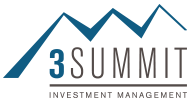The recent pandemic has delivered a sudden and deep economic shock to local businesses in the Tysons/Vienna region. There are several government programs that have been created or expanded through the CARES Act, which was recently passed through Congress and signed into law by the President to help small businesses cope and survive this health and economic crisis.
This column is to assist small business owners to better understand the emergency support programs available to them through the Small Business Administration and to help them decide the program that may be best for their business.
I will start by saying any business owner that is suffering lost revenue and other business challenges as a result of COVID-19 should absolutely take advantage of one of the SBA loan programs we are going to cover. Both programs include either loan forgiveness or a financial grant that results in financial assistance for your business that does not need to be re-paid!
SBA Paycheck Protection Program (PPP)
The first program is the Paycheck Protection Program (PPP), which seeks to underwrite two months of payroll and related expenses to help business retain and pay their employees during the pandemic crisis.
The most important feature of a PPP loan is that any portion of the loan that is used for qualified expenses during the 8-weeks after the loan is originated are eligible to be forgiven and do not need to be paid back!
Here are a few key details of the PPP loan program:
- Businesses operating on February 15th, 2020 with less than 500 employees that can qualify for a PPP loan include business entities, sole proprietorships, and specific categories of nonprofits.
- Qualified expenses that you may use the loan proceeds to cover and that are eligible for loan forgiveness include payroll, group health insurance premiums, rent, utilities and mortgage interest payments.
- Your business is eligible to borrow the lesser of $10 million or 2.5 times the average payroll costs you incurred during the prior year before the date the loan is made. There are many details to how the average payroll cost is calculated, you should work with your accountant and loan originator to ensure you understand the calculation.
- The amount of debt that is eligible to be forgiven decreases if your business lowers wages in excess of 25% or decreases the number of full-time equivalent employees during the initial 8-week period after loan origination. Employees laid off and re-hired by June 30th, 2020 will not reduce the loan forgiveness amount.
- Any portion of the loan that does not qualify for loan forgiveness will become a maximum 10-year loan with an interest rate not to exceed 4%. There is a 6-month deferment on the first loan payment.
The PPP loan program is on a first come first serve basis with loans being distributed until the $339 billion in funds allocated have been depleted. If you believe your business qualifies for a PPP loan, you should begin the application process by contacting a commercial banker and your accountant. You must go through an authorized SBA 7(a) lender to apply.
SBA Economic Injury Disaster Loan Program (EIDL)
A second program that was expanded by the CARES Act is the EIDL program, which almost all businesses and contractors can qualify for, including gig economy workers. This program is very easy to apply for and does not require you to go through an authorized SBA underwriter.
The application may be filled out on the SBA website and takes very little time to complete. Here is the best part, you can select an option to receive an emergency grant of $10,000 at the end of the application that you do not have to re-pay, even if you are not approved for a loan! The SBA will deposit the $10,000 in your bank three business days after the application is completed online.
Here are a few key details of the EIDL loan program:
- Businesses with less than 500 employees that can qualify for the program include business entities, sole proprietors and independent contractors with or without employees and nonprofits.
- The EIDL program provides for loans up to $2 million.
- Proceeds of the loan are not forgivable, but the $10,000 emergency grant does not need to be repaid, even if your business is not approved for a loan.
- The proceeds of the loan may be used to pay fixed debts, payroll, accounts payable, rent, utilities and other bills that cannot be paid because of the disaster impact.
- Loans under $25,000 do not require collateral. Loans over $200,000 require a guarantee.
- The term of the loan is up to 30 years with an interest rate not to exceed 3.75%.
Learn More
If you have questions about the SBA programs, please contact us and we will help you get the answers you need at no charge. We specialize in serving the financial and investment needs of business owners and are dedicated to helping local businesses navigate this health and economic crisis.

